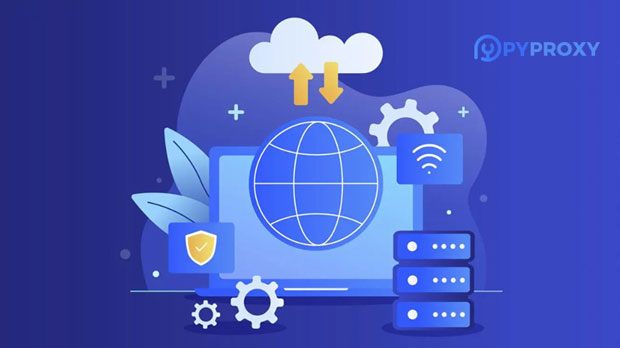When it comes to choosing the right type of proxy, SOCKS5 and HTTP proxies often come up as the most popular options. Each of them has its own strengths and is suited for different use cases. socks5 proxies offer greater flexibility and support a broader range of applications, including email, torrenting, and more, while HTTP proxies are more specialized, typically used for web browsing, scraping, and content filtering. Understanding the key differences and the scenarios in which each proxy shines can help users make an informed decision tailored to their specific needs. Understanding socks5 proxy: Advantages and Suitable ScenariosSOCKS5, the latest version of the SOCKS protocol, is a versatile proxy that works at a lower level of the OSI model, allowing it to handle various types of traffic. Unlike HTTP proxies, which are designed specifically for web browsing, SOCKS5 can manage a wide range of internet applications, including web traffic, torrents, and even gaming data.Advantages of SOCKS5 Proxy:- Protocol Independence: SOCKS5 is not limited to HTTP traffic. It can handle any type of data packet, such as FTP, P2P, and even email. This makes it a versatile option for various use cases, including file sharing and secure communications.- Better Performance: Because SOCKS5 is less restrictive, it often provides better performance in terms of speed and flexibility. It doesn't alter or inspect the data packets, which can lead to fewer delays and more reliable connections.- Security and Anonymity: SOCKS5 supports authentication, meaning users can secure their proxy connections with a username and password. While it doesn't encrypt the data by default, it allows for greater privacy, particularly in scenarios where anonymity is important.Scenarios Where SOCKS5 Proxy Is Most Useful:1. Torrenting and P2P File Sharing: SOCKS5 proxies are commonly used by individuals involved in torrenting and P2P file-sharing. These activities involve a lot of traffic types other than HTTP, which SOCKS5 can handle efficiently.2. Online Gaming: Gamers who wish to mask their IP address or bypass geo-restrictions often turn to SOCKS5 proxies. Since the protocol works for a variety of gaming data, it’s ideal for minimizing lag and improving connection stability.3. Privacy and Anonymity: Those who value their online privacy, such as users in countries with restrictive internet regulations, often use SOCKS5 proxies to prevent surveillance or tracking while surfing the web.Exploring HTTP Proxy: When and Why It Works BestUnlike SOCKS5, which is more generalized, an HTTP proxy is specifically designed to manage web traffic. It operates at the application layer and is typically used for HTTP and HTTPS requests. While it is not as versatile as SOCKS5, its specialized nature allows it to perform exceptionally well in certain scenarios.Advantages of HTTP Proxy:- Web Traffic Optimization: HTTP proxies excel at handling web-based traffic, making them an ideal choice for users looking to access websites, browse social media, or perform content scraping tasks. These proxies are designed to handle HTTP and HTTPS requests efficiently.- Content Filtering and Access Control: Many organizations use HTTP proxies for content filtering and access control. This allows them to restrict access to certain websites or services, providing security and compliance.- Ease of Use: HTTP proxies are often easier to set up and manage, as they are commonly integrated into web browsers. This makes them more accessible for users who need to perform specific tasks, like browsing or accessing geo-blocked content.Scenarios Where HTTP Proxy Is Most Useful:1. Web Scraping: Developers and data analysts often rely on HTTP proxies for web scraping tasks. By masking their real IP addresses, they can extract large volumes of data from websites without being blocked or throttled.2. Bypassing Geo-Restrictions and Content Censorship: HTTP proxies are often employed by users who want to access content that is restricted based on geographical location. By routing traffic through a server in a different country, users can bypass these restrictions.3. Corporate Networks and Security: HTTP proxies are commonly used in corporate networks to filter web traffic, block malicious sites, and ensure employees adhere to acceptable use policies. They provide a layer of security by controlling what sites can be accessed.Key Differences Between SOCKS5 and HTTP ProxiesWhile both SOCKS5 and HTTP proxies act as intermediaries between the user and the internet, they differ significantly in terms of capabilities and use cases. Below are the key differences between these two types of proxies:1. Protocol Handling:- SOCKS5 can handle various protocols such as HTTP, FTP, POP3, and more, while HTTP proxies are strictly for HTTP and HTTPS traffic.2. Performance:- SOCKS5 generally offers better performance because it does not alter the data packets, leading to faster speeds, especially for activities like torrenting and online gaming.- HTTP proxies, however, may introduce slight latency due to their additional traffic filtering capabilities.3. Flexibility:- SOCKS5 is much more flexible, suitable for a variety of internet activities beyond web browsing, such as file sharing, online gaming, and email.- HTTP proxies are limited to web browsing, making them more specialized for tasks like scraping or bypassing content restrictions.4. Security and Anonymity:- While SOCKS5 supports user authentication, it does not encrypt the data by default, though it can be combined with additional security tools to enhance anonymity.- HTTP proxies can be combined with HTTPS to provide secure browsing, but they lack the full anonymity that SOCKS5 can offer for non-HTTP traffic.Choosing the Right Proxy for Your NeedsThe decision between SOCKS5 and HTTP proxies largely depends on your specific requirements. Understanding the nature of the tasks you want to perform online will guide your choice:1. For Versatility and Anonymity: If you need a proxy that supports multiple types of internet activities, including gaming, torrenting, and browsing, then SOCKS5 is your best bet. It offers the flexibility needed for a diverse range of use cases and is better for those who need more privacy and security.2. For Web-Specific Tasks: If your focus is on tasks like web scraping, accessing geo-blocked websites, or browsing, an HTTP proxy is more suited. It's simple to use and ideal for managing HTTP and HTTPS traffic efficiently.3. For Corporate or Organizational Use: In environments where content filtering, access control, or secure browsing is necessary, HTTP proxies excel. They are easier to deploy and manage for teams or organizations, providing greater control over web usage.Conclusion: Which Proxy Should You Choose?Both SOCKS5 and HTTP proxies have their unique benefits and limitations. If you need an all-encompassing proxy capable of handling various types of internet traffic with enhanced performance and security, SOCKS5 is the better option. However, for simple, web-based tasks like browsing or scraping, an HTTP proxy will suffice. Understanding your needs, the type of traffic you want to manage, and the level of security required will help you make an informed choice that best fits your objectives. Ultimately, both proxies offer distinct advantages, and the choice depends on the specific use case at hand.
Dec 26, 2024
![arrow]()



















































